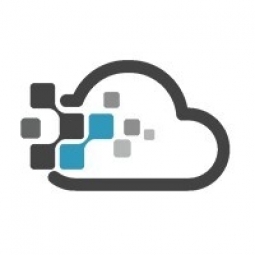Technology Category
- Infrastructure as a Service (IaaS) - Public Cloud
- Platform as a Service (PaaS) - Application Development Platforms
Applicable Industries
- Buildings
- Cement
Applicable Functions
- Product Research & Development
- Quality Assurance
Use Cases
- Building Automation & Control
- Construction Management
Services
- Cloud Planning, Design & Implementation Services
- Hardware Design & Engineering Services
About The Customer
LSIS is a Korean enterprise interested in building a universal high-performance computing (HPC) cloud-based CAE platform. The company had established an organization called C2 in 2015, with the mission to develop an effective and reliable system to support CAE and CAD. The objective was to create a system that their in-house engineers could use anytime, anywhere without any limitations. However, they faced challenges due to the high cost of building a private HPC platform and the need for a cloud platform that could effectively run CAE software like ANSYS, STAR-CCM+, and Abaqus.
The Challenge
LSIS, a Korean enterprise, was keen on building a universal high-performance computing (HPC) cloud-based CAE platform. The company had established an organization called C2 in 2015, with the mission to develop an effective and reliable system to support CAE and CAD. The objective was to create a system that their in-house engineers could use anytime, anywhere without any limitations. However, the cost of building a private HPC platform was over 5 million USD, which was prohibitively expensive. The high cost of constructing an HPC data center made it more sensible to transition to the public cloud. LSIS also faced the challenge of finding a cloud platform that could effectively run CAE software like ANSYS, STAR-CCM+, and Abaqus without requiring significant time and money to install the software on the infrastructure.
The Solution
LSIS found a solution in Rescale, a cloud HPC service company, which they were introduced to through a meeting with Amazon Web Services (AWS) in the first half of 2016. Rescale offers a variety of HPC services such as engineering design, scientific calculations, machine learning, and on-demand cloud HPC services that add scalability and security reliability in a cost-effective way. Rescale provides an on-demand, pay-per-use service for hardware and software. On the Rescale platform, CAE jobs can be run on a web-based GUI that requires only a few easy step-by-step clicks to complete. It can also handle pre-processing and post-processing in the cloud. Rescale supports a wide variety of software, allowing LSIS to choose the right software for their business requirements. They can also configure their hardware by utilizing data centers around the world, and use as many cores as they want.
Operational Impact
Quantitative Benefit

Case Study missing?
Start adding your own!
Register with your work email and create a new case study profile for your business.
Related Case Studies.

Case Study
System 800xA at Indian Cement Plants
Chettinad Cement recognized that further efficiencies could be achieved in its cement manufacturing process. It looked to investing in comprehensive operational and control technologies to manage and derive productivity and energy efficiency gains from the assets on Line 2, their second plant in India.

Case Study
Energy Saving & Power Monitoring System
Recently a university in Taiwan was experiencing dramatic power usage increases due to its growing number of campus buildings and students. Aiming to analyze their power consumption and increase their power efficiency across 52 buildings, the university wanted to build a power management system utilizing web-based hardware and software. With these goals in mind, they contacted Advantech to help them develop their system and provide them with the means to save energy in the years to come.

Case Study
Intelligent Building Automation System and Energy Saving Solution
One of the most difficult problems facing the world is conserving energy in buildings. However, it is not easy to have a cost-effective solution to reduce energy usage in a building. One solution for saving energy is to implement an intelligent building automation system (BAS) which can be controlled according to its schedule. In Indonesia a large university with a five floor building and 22 classrooms wanted to save the amount of energy being used.

Case Study
Powering Smart Home Automation solutions with IoT for Energy conservation
Many industry leaders that offer Smart Energy Management products & solutions face challenges including:How to build a scalable platform that can automatically scale-up to on-board ‘n’ number of Smart home devicesData security, solution availability, and reliability are the other critical factors to deal withHow to create a robust common IoT platform that handles any kind of smart devicesHow to enable data management capabilities that would help in intelligent decision-making

Case Study
Protecting a Stadium from Hazardous Materials Using IoT2cell's Mobility Platform
There was a need for higher security at the AT&T Stadium during the NFL draft. There was a need to ensure that nuclear radiation material was not smuggled inside the stadium. Hazmat materials could often be missed in a standard checkpoint when gaining entry into a stadium.








